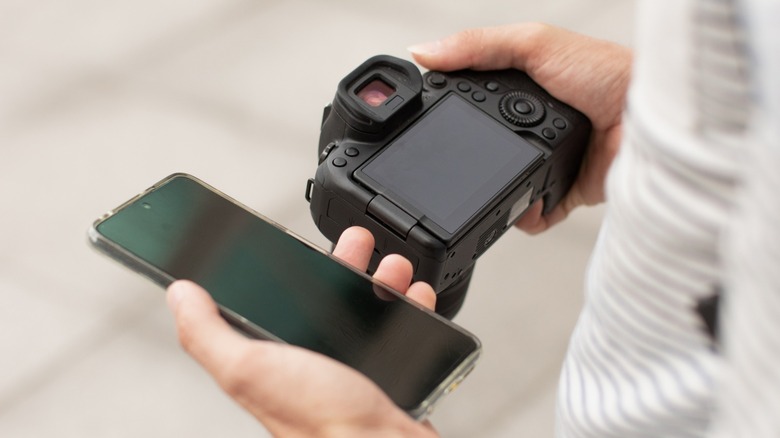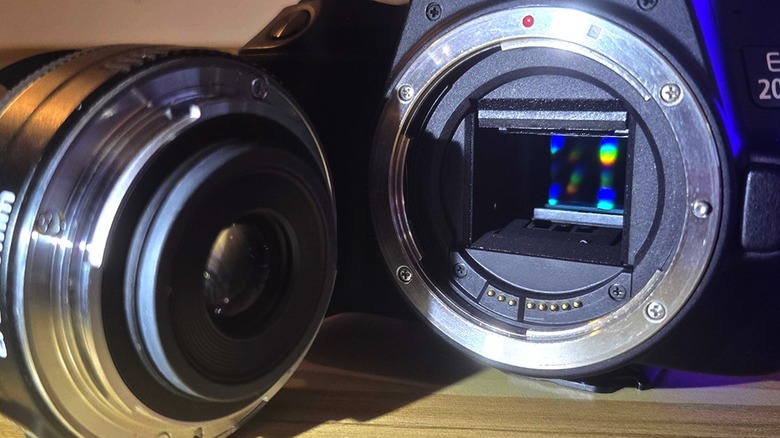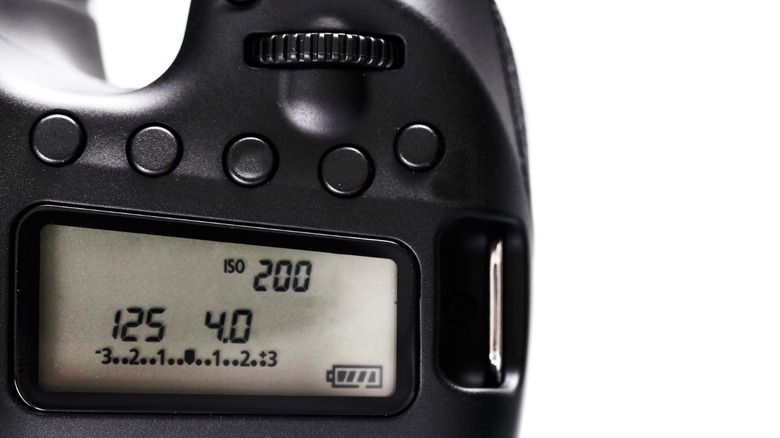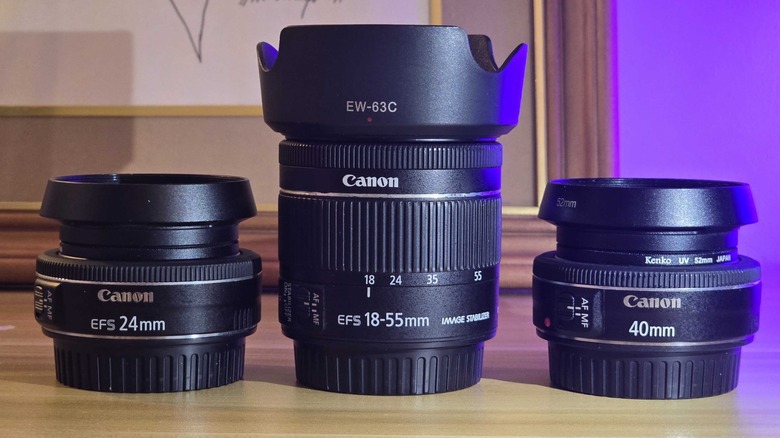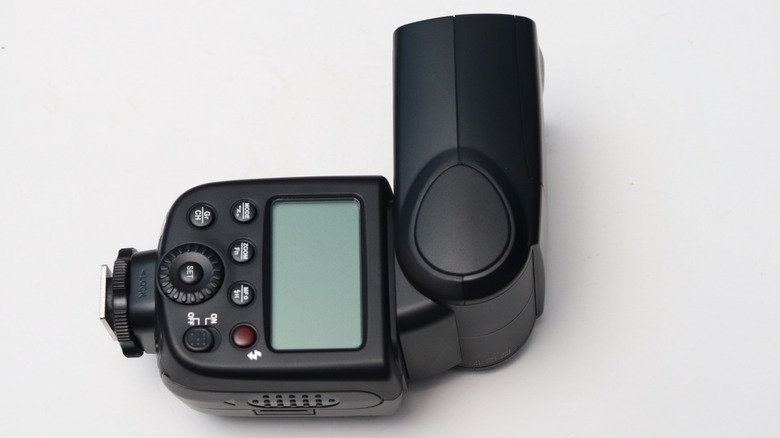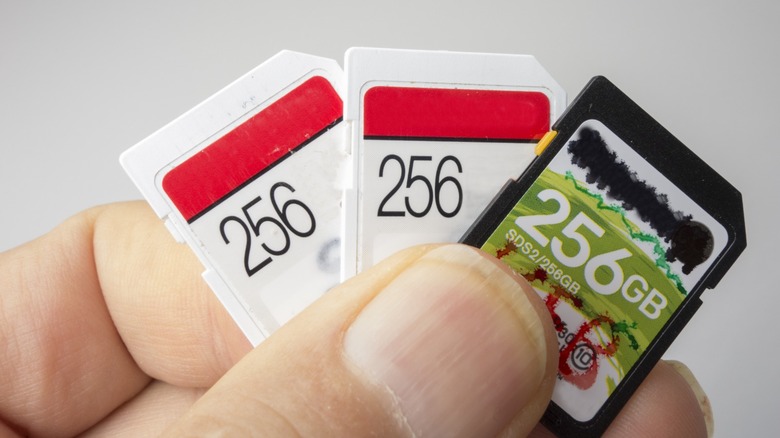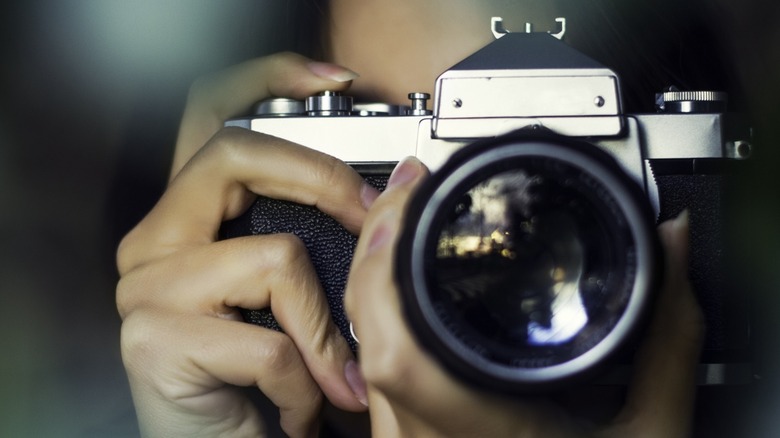Why I Still Prefer My DSLR Camera Over Smartphone Options
Smartphone cameras have come a long way, with the latest models able to shoot high quality images that can rival professional photos. Some of my favorite photos were taken using my iPhone 14 Pro Max or Samsung S24 Ultra; in fact, I've taken countless artistic images ever since I've owned a nice camera phone in the form of a Sony Ericsson K550i from 2007.
I always say that the best camera is the one that you have in your hands when you see something that you want to capture. This makes a camera phone often the best tool for capturing day-to-day moments as it's usually in your pocket. But despite the advancements in computational photography which made the iPhone 15 camera such a huge upgrade, I still prefer using DSLRs when I'm taking photos. That's because the physical qualities of these cameras that I discovered in my years as a professional photographer still outclass even the most advanced algorithms that smartphones use to reproduce DSLR-like quality.
The large sensors on DSLRs make for cleaner, crisper photos
The biggest advantage of DSLRs are their use of larger sensors to capture light. Even smaller cropped-sensor cameras have a much larger surface area than what you can find on the best camera phones. Because of this, DSLR cameras can gather more light and produce higher quality images, even if some smartphone cameras offer much higher resolutions of up to 200 megapixels.
That means your camera will have better low-light performance and it will produce images with less noise. Aside from those advantages, the larger sensor will give you a shallower depth of field, which is crucial for making your subject pop out of the background. You'll also get a wider field of view, which makes DSLRs great for landscape photography.
Modern smartphones use image processing (also known as computational photography) to compensate for the disadvantages that smaller sensors have. However, a great raw image is still crucial to getting the best photo after post-processing, and a DSLR's larger sensor is key to getting that.
Manual control lets me easily achieve my vision
Automatic exposure controls on camera phones make it super convenient to capture snapshots.They help you get the best possible image by ensuring that your scene is evenly lit and your subject is highlighted well. However, if you're trying to get a more dramatic feel by altering the exposure or you want to use long-exposure techniques to create light trails, you need partial or complete manual control of your camera.
Unfortunately, this is not possible with the iPhone's built-in camera app, meaning you need to download a third-party camera to achieve the effects you want. Many Android phones, like the Samsung Galaxy S25 Ultra, have some manual control in the stock camera app, but they're still missing aperture control.
This is unlike DSLRs and mirrorless cameras, where every control you need is at your fingertips. Let's take a look at the Canon EOS 200D Mk II, for example. On this camera, shutter speed setting is controlled by your index finger using the main dial, while you can change the aperture by pressing the Av button with your thumb while rolling the main dial. You can also adjust the ISO with a press of a button and a roll of a dial. These controls make it easy and intuitive to operate the camera, allowing you to optimize exposure settings without taking your eye off the subject.
Lens options help me shoot what I want
Another thing smartphone cameras have tried to emulate is the varying effects that interchangeable lenses deliver. The most expensive camera phones usually have three to five camera lenses, allowing you to shoot wide landscape photos, zoomed-in images of the farthest objects, and everything in between. However, a smartphone camera cannot recreate the feel that you get with DSLR or mirrorless camera lenses. Of course, if you compare a top-quality phone camera with the basic 18-55 mm lens included with some of the best affordable DSLRs, the smartphone camera is bound to come out on top.
But once you purchase specialized lenses, like fast prime or long zoom lenses, you'll realize that you're missing out on a lot with a smartphone camera. I had this experience myself when I bought a camera and found myself dissatisfied with the kit lens included with it. After I purchased a 24mm F/2.8 lens, I never went back to my old lens. I even bought a second 40mm F/2.8 lens for shooting portraits, although I still prefer the wider 24mm. My Samsung Galaxy S24 Ultra has theoretically similar focal lengths, but it's just not able to replicate the photos that I take using those lenses on my DSLR.
External flash attachments make DSLRs great for freezing action and lighting up a scene
Camera phones have built-in LED flash units to light up dark scenes; however, they do not have enough power to compete against the dedicated flash units you can buy for DLSRs and mirrorless cameras. You really don't need these external flash units for everyday photography. In fact, even the built-in flash on entry-level cameras is strong enough to produce a 'frozen-in-time' effect.
However, if you're shooting in dimly lit settings, like a party venue, you will likely want an external flash attachment to ensure that all your photos are evenly lit. Based on my experience, the built-in camera flash on most smartphones will struggle in situations like this, and you'll probably end up with underexposed photos. Even the built-in flash on DSLRs and mirrorless cameras will tend to return harsh lighting because of its small size and proximity to the camera lens.
If you want to have ultimate control of light even in places that aren't pitch black dark, you can only accomplish that with one or more external flash units and some remote triggers. That's why professional photographers often have these large units with them for portrait photography, and you will even find some sports photographers using these flash units.
I don't have to worry about storage with SD cards
One of my pet peeves with modern smartphones is the lack of expandable memory. This isn't really an issue if you're only using your phone for photography, but the moment that you add videos, apps, and other content to your device, you'll soon realize that 256 GB of storage isn't enough for all your needs.
For example, I took more than 1,200 photos during my last overseas vacation, which took up over 35 GB. If you don't have that much available space on your phone, this will be a problem — especially if you don't have cloud storage or you didn't bring your laptop with you to back up your files.
If you have a DSLR or mirrorless camera, you likely have nothing stored on its SD card except the pictures that you just took. And if you run out of space during your trip, you don't have to delete images — instead, you can just head to a nearby electronics store and purchase another SD card to continue shooting. Just ensure that you don't misplace your old one so as not to lose your memories.
The camera form factor is better for taking pictures
Smartphones are much easier to keep in your pocket, so it's not a hassle to carry them around with you. But once you're taking photos, you'll find that the form factor of DSLR and mirrorless cameras are more suitable for this purpose. The large grip surfaces these devices have make them easier to use with two hands, which is crucial for stability.
As mentioned earlier, physical camera controls are much easier to manipulate than smartphone camera controls, allowing you to change settings on the fly without having to look at the screen. This will be a total game changer for you if you're used to manipulating the manual controls on your smartphone's touchscreen, which require several swipes and taps just to change the shutter speed (if it's even possible).
Furthermore, the articulating or tilting screen found on several camera models makes it easier to take pictures without needing to put your DSLR to your face. You'll find this feature useful for shooting in awkward positions, and it's also great if you want to discreetly take pictures, especially if you're into street photography.
Don't get me wrong, I love smartphones as it essentially means that I have a camera on me anywhere I go. In fact, I have several photography art pieces that I captured using my Samsung phone. But if I want to go out with my buddies to explore an area and take pictures, or if I'm covering an event and want to capture beautiful moments, I'll definitely choose my DSLR over my camera phone.
